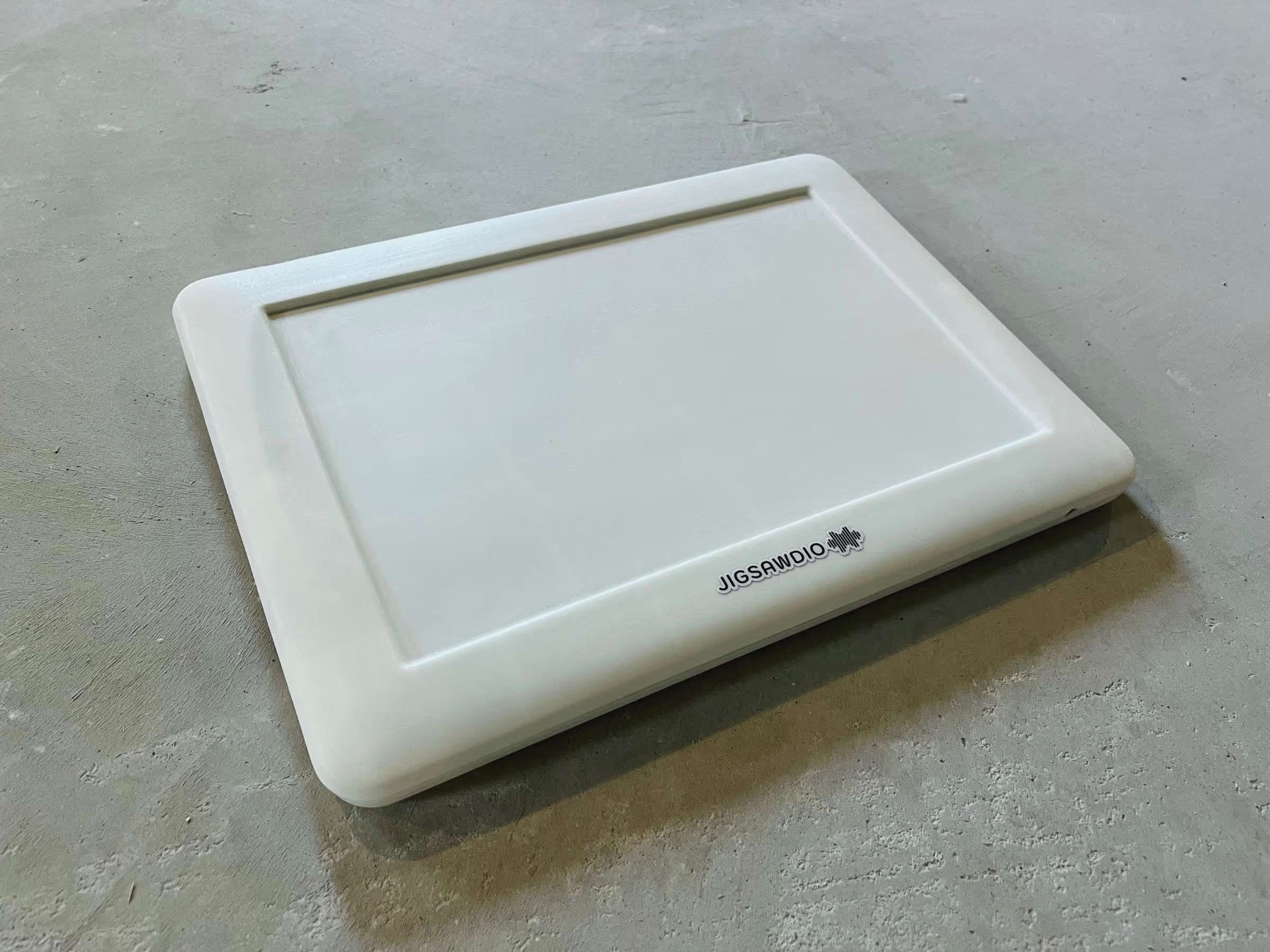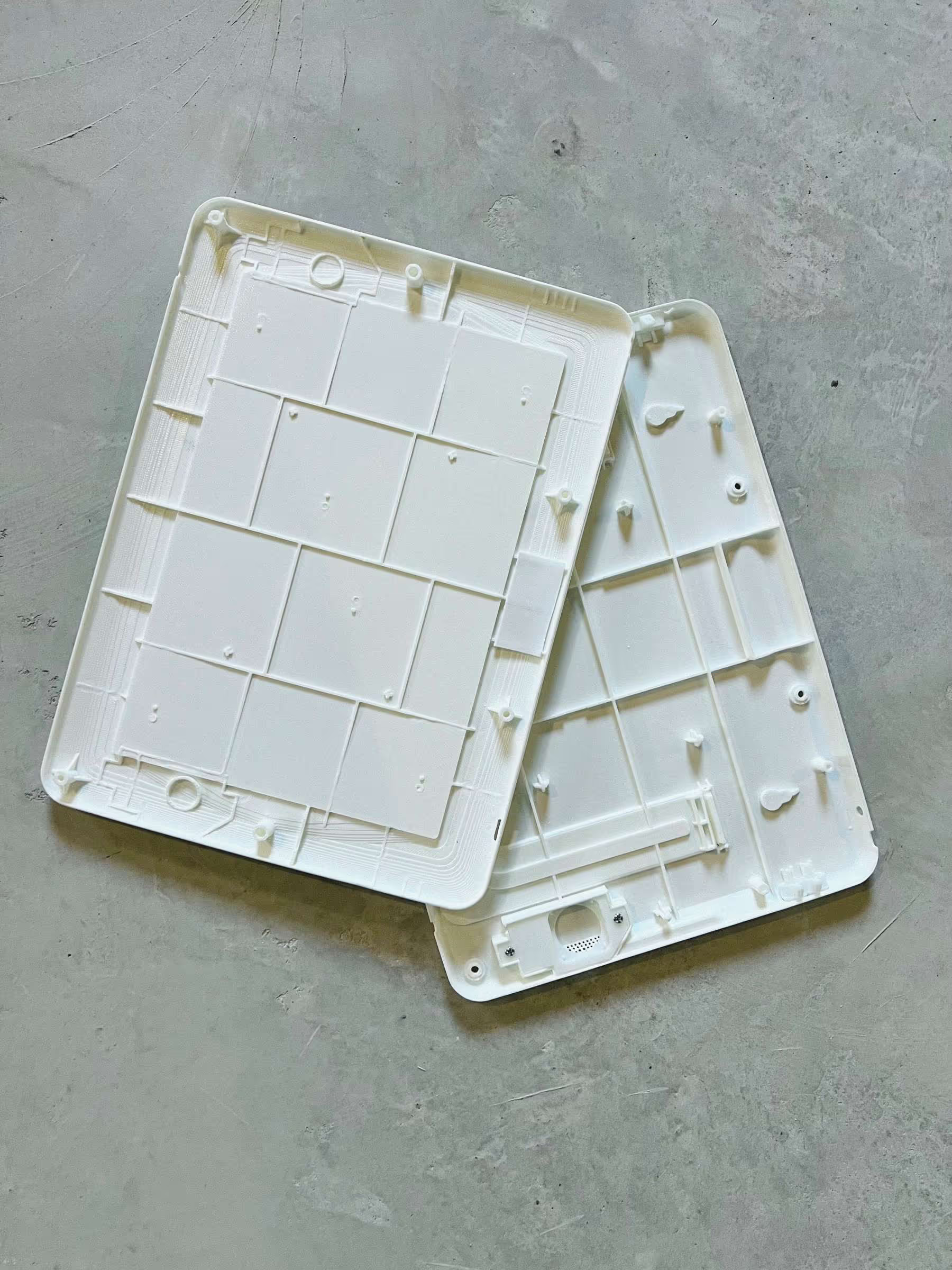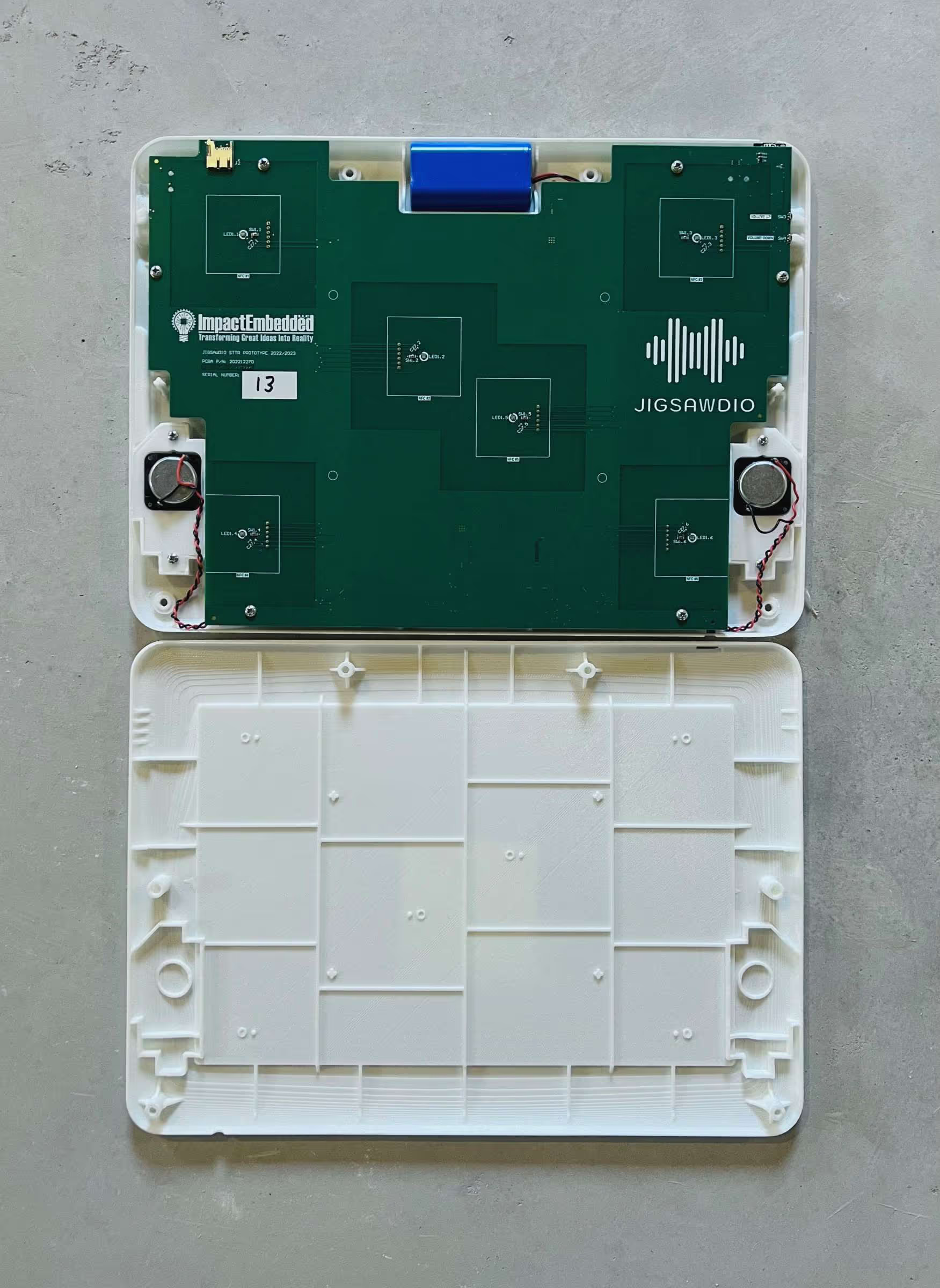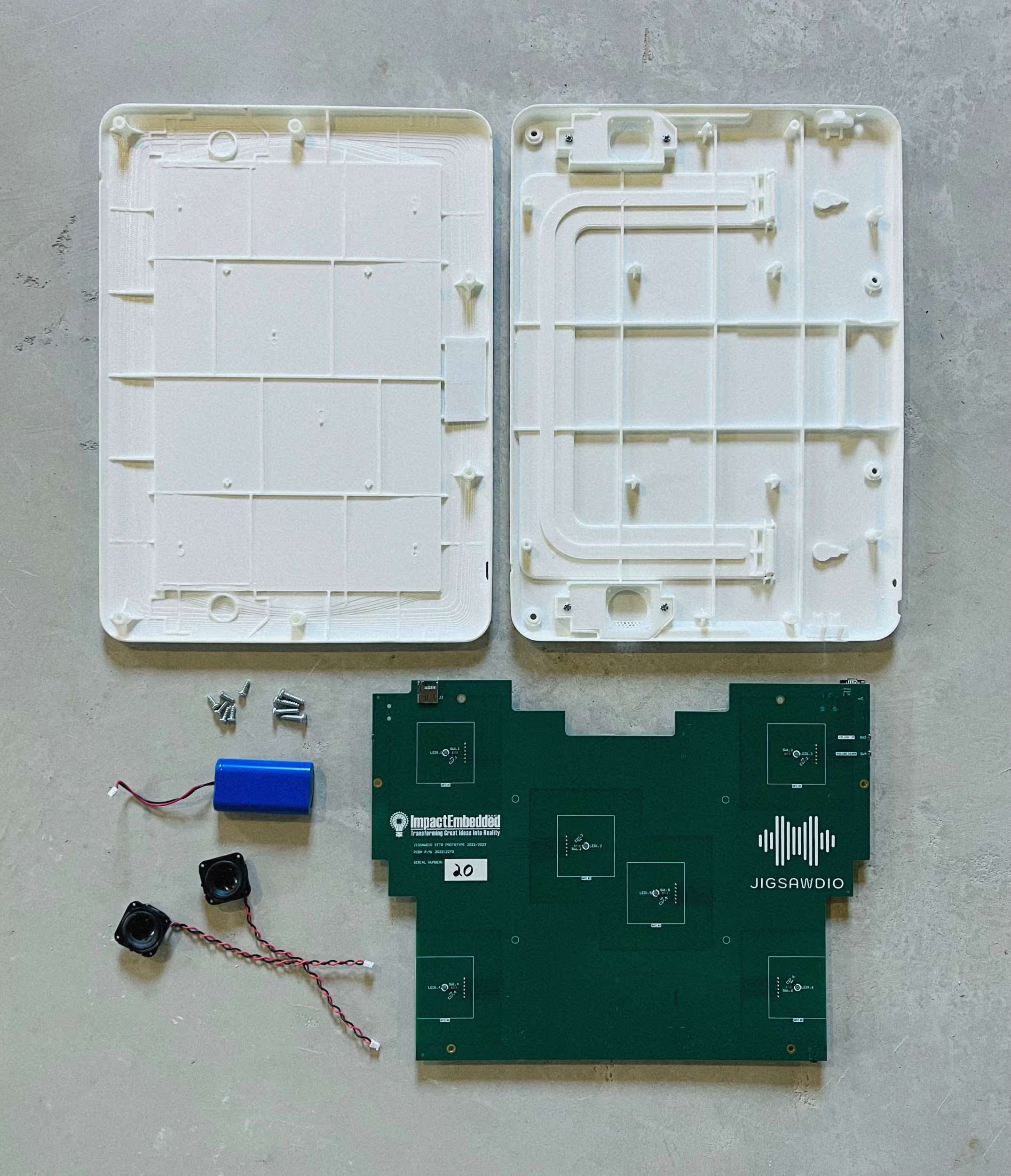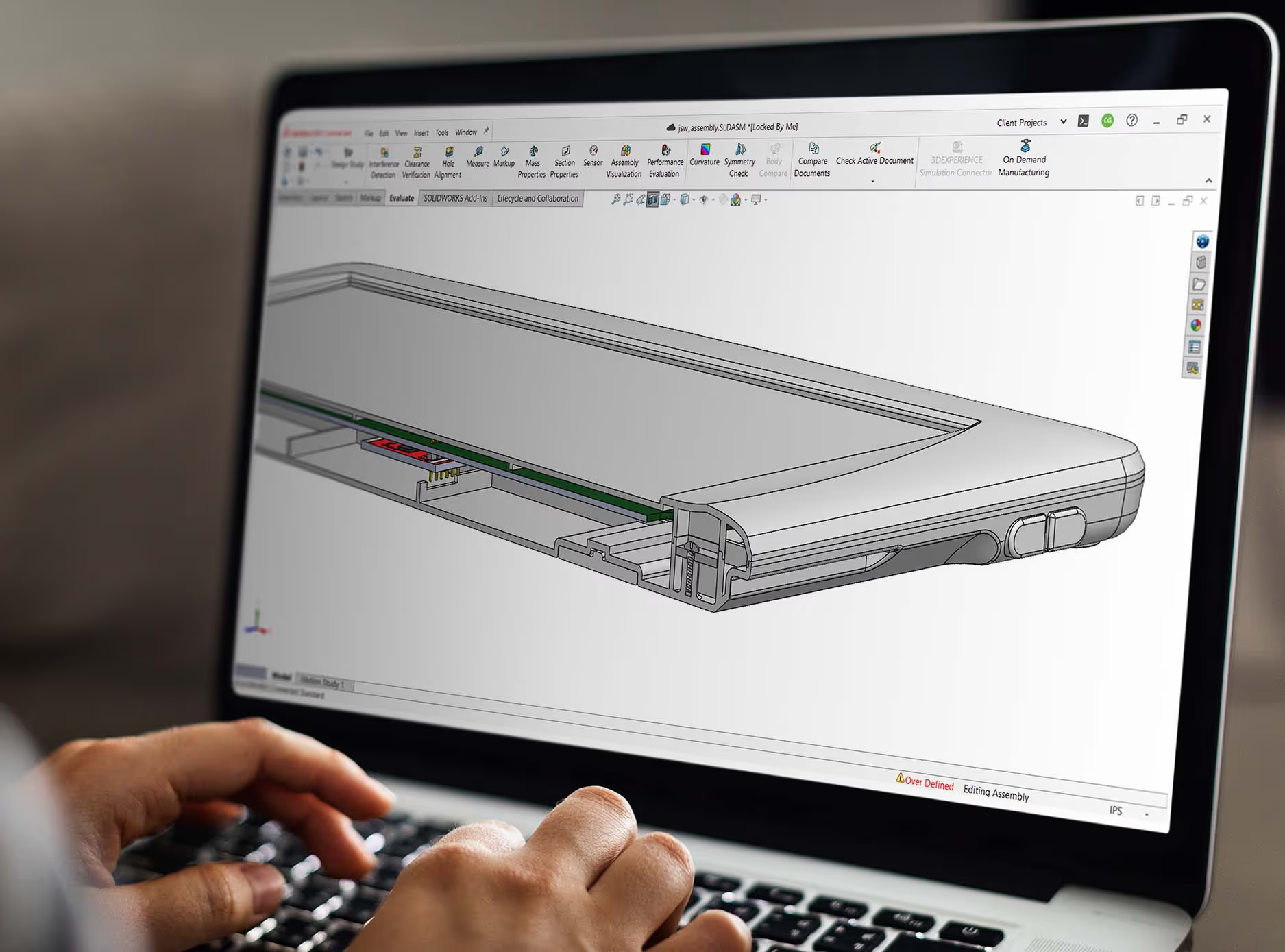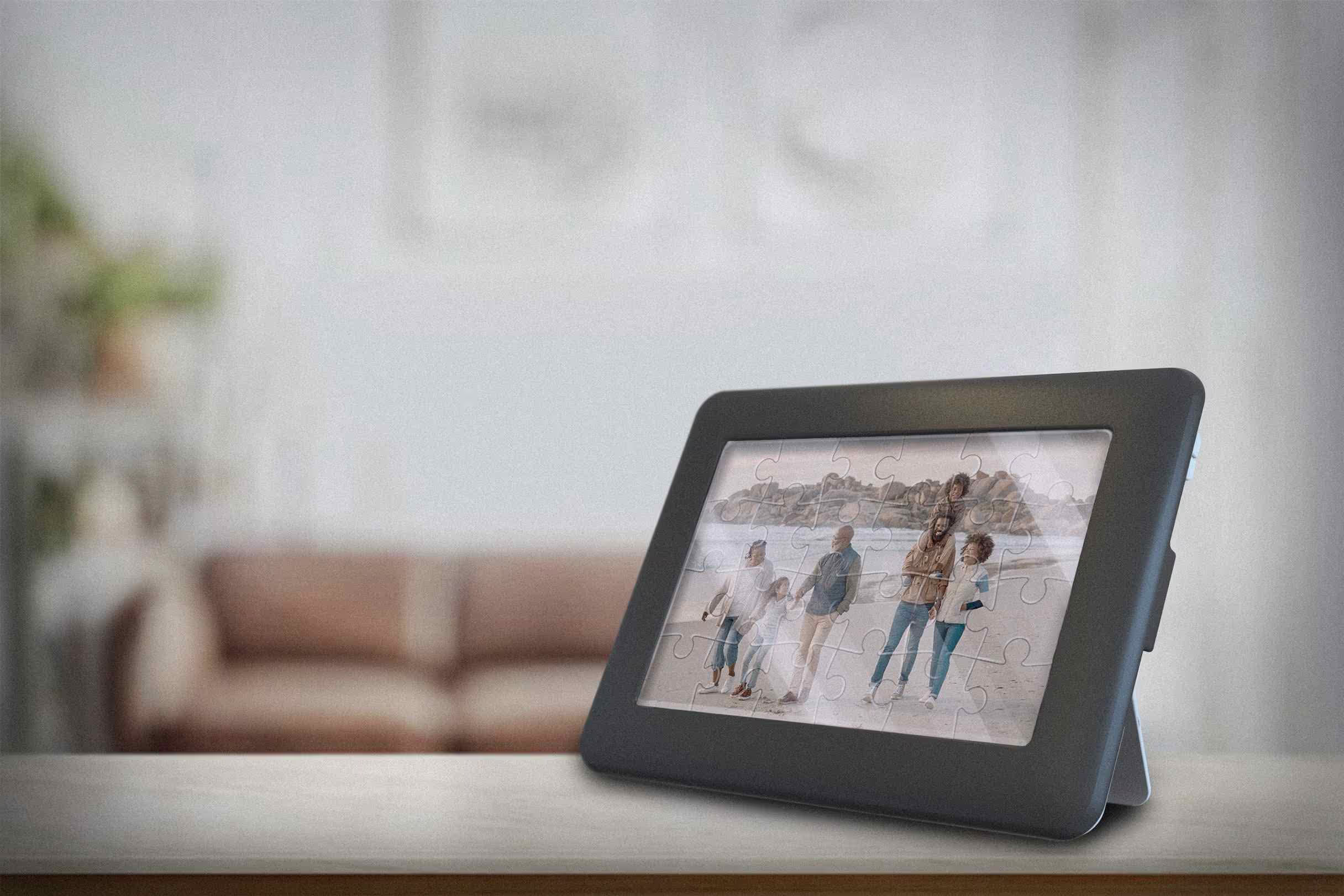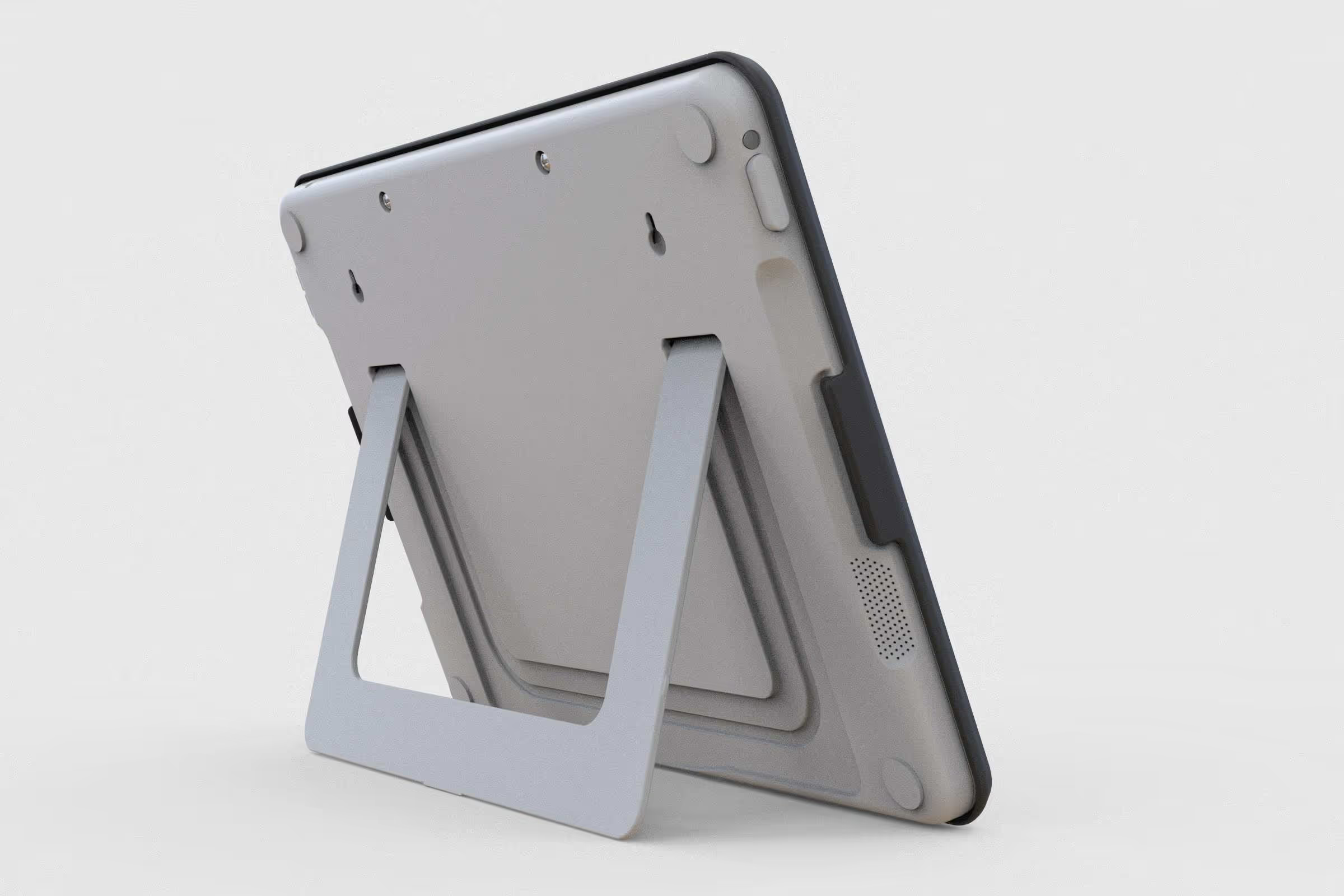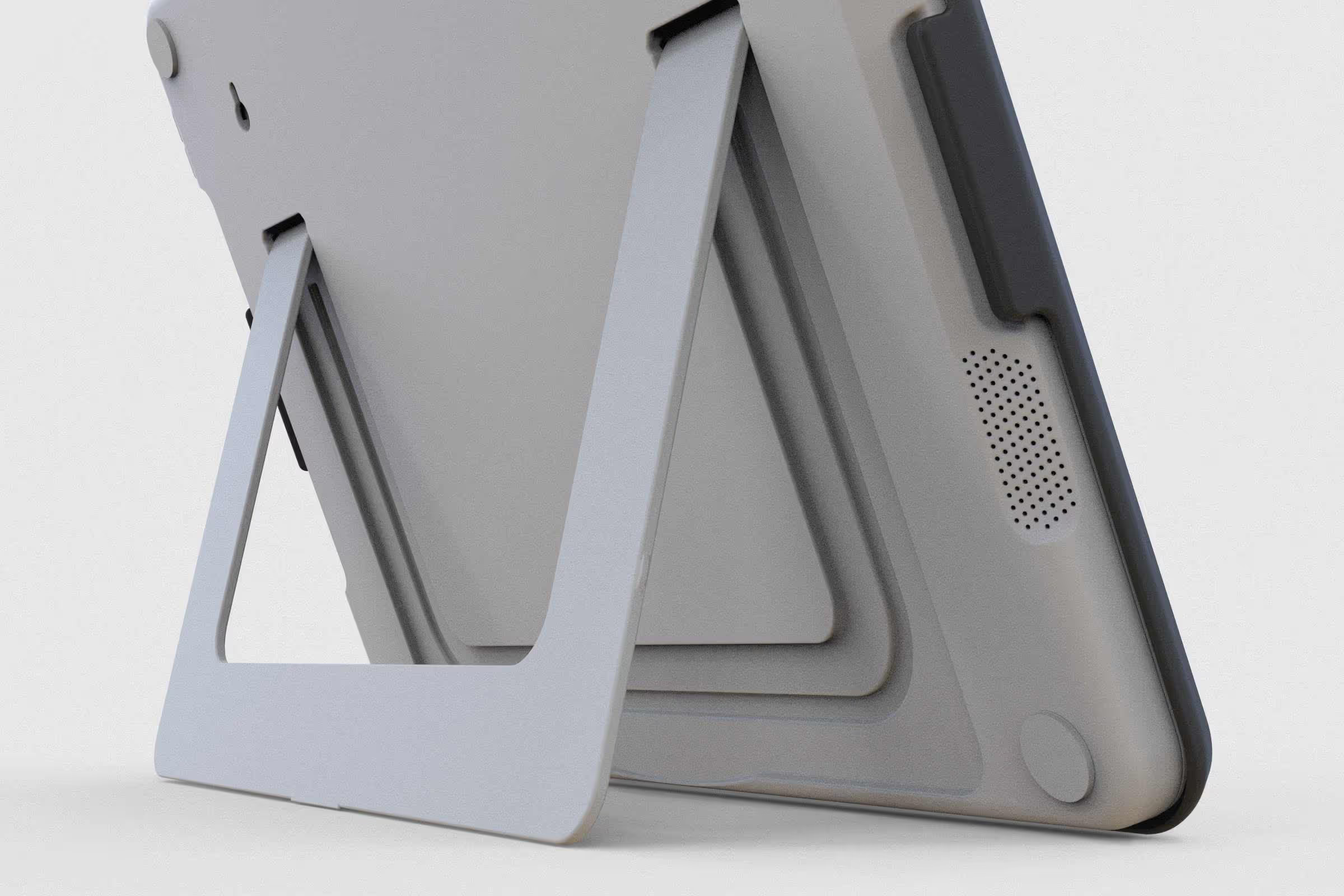Completing the puzzle
The Jigsawdio puzzle board is designed for people with Alzheimers, dementia, or other memory issues to engage with the meaningful aspects of their life. It is a specially designed puzzle that uses personalized photos and recorded messages to evoke memories and stimulate social engagement. Jigsawdio aims to provide a personalized and familiar activity that can help improve cognitive function and emotional well-being in this underserved population.

Opening the puzzle
Loneliness resulting from social isolation can lead to various health issues for the Alzheimer’s disease and related dementia (ADRD) population. From cognitive decline, depression, stress, high blood pressure, to poor sleep, this became more apparent during the COVID-19 pandemic where social connections were disrupted. Jigsawdio, a startup founded by Amy Young, developed an audiovisual jigsaw puzzle board that incorporates personalized photographs and audio recordings of memories to address various health concerns.
Jigsawdio came to us after creating their first functional prototype and then went on to receive a Science and Technology Transfer (STTR) grant. This grant helped to fund phase 1 of prototype development and the use case study of the audiovisual jigsaw puzzle. The product needed to be based on several premises, including the positive impact of spending time with loved ones, the benefits of reminiscence therapy, the opportunities for social experiences and the stress reducing effects of a jigsaw puzzle. Along with the social engagement premises, the product also needed to feel as though it could be displayed in a home / living environment.
Taking apart the pieces
With a specific need for social engagement in the ADRD population, Jigsawdio was eager to take the next steps in improving the wellbeing and quality of life of those with memory loss. To help make this possible, Trig was challenged to design and assemble 30 functioning prototypes for a six-week study conducted by researchers from Indiana University. This research would assess the emotional impact of the visuals and sounds on the participants, their preferences and reactions, and the level of their engagement.
Trig designers began brainstorming and producing multiple sketch ideation cycles that allowed us to gain feedback from our client in the eyes of the end user. Sketching was an important step in the design process as it allowed the designers to explore and iterate on different ideas before moving on to more detailed prototyping. Along with designing the puzzle board itself, we were tasked to find a way to display the jigsaw puzzle in a home environment once it was finished.
After multiple rounds of concept sketches to define the overall form of the product, our design team jumped right into CAD to start building out the audiovisual jigsaw puzzle enclosure. Throughout this period, there was a close collaboration with Impact Embedded LLC, who played a significant role in the electromechanical development of the product, enabling the incorporation of the audiovisual feature. With good communication, we were able to make sure the design was suitable for the needs of the electrical components without losing the overall aesthetic that was chosen by Jigsawdio. Our designers were able to visualize the design, test its functionality, and make modifications before the prototypes were manufactured.
Explore

Prototype

Build

As a first time entrepreneur and product creator, it was important for me to work with a team that was experienced and would guide me through the process. Ty, Brian and Chloe were thoughtful and thorough with the design process and helped me think through the ideal scenarios. They also had a clear process that they communicated well with me. The team adjusted to unforeseen changes and worked well with other experts involved in the product development. I felt very comfortable and trusted them from the first conversation to our current prototype. I highly recommend their team for product development. They are a passionate team of professionals, and I’m grateful for their partnership and dedication.

Solving the puzzle
Addressing the notable challenge of social engagement in the ADRD population, the Jigsawdio audiovisual puzzle board emerges as a promising tool tailored to this group's unique needs. Jigsawdio provides a multi-sensory experience that can enhance cognitive function and improve quality of life. Now, you might be wondering how that is accomplished.
A Jigsawdio puzzle is not just your ordinary puzzle. It consists of a frame and acrylic puzzle pieces that are played on a soundframe. The pieces of the puzzle are personalized with images and audio stories that are specific to the individual with memory loss. Out of the pieces, six are "sound" pieces that light up and play recordings narrating the image associated with that part of the puzzle, making the experience more interactive and stimulating. Music and nostalgic songs, in particular, have been demonstrated to evoke delight among participants. After completing the puzzle, users can display it in their home by using a snap-on frame and a kickstand - essentially becoming a picture frame. While the puzzle is on display, users can engage with the playback feature that cycles through each audio recording all while keeping the frame on and the puzzle in place.
Overall, Jigsawdio’s audiovisual jigsaw puzzle is a creative and innovative solution to a common problem faced by those with ADRD. It provides a fun and engaging activity that can improve their quality of life and bring joy to their day-to-day routines.



